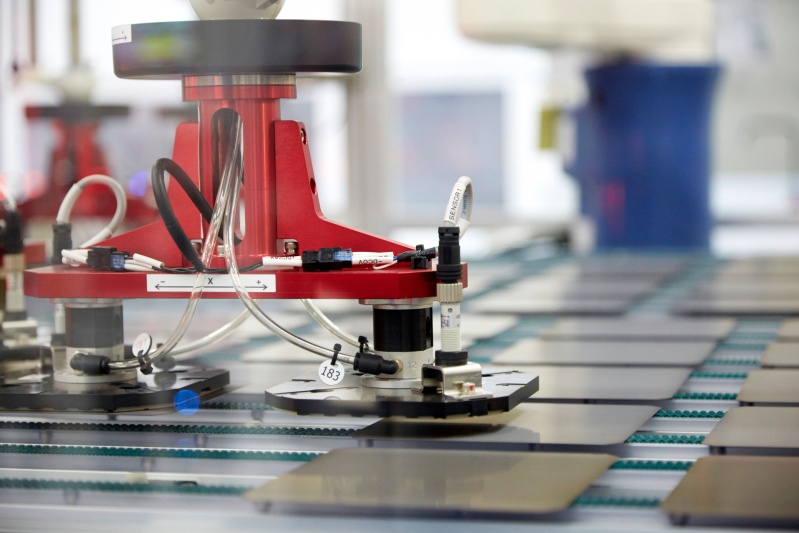Korean solar module maker Hanwha Q-Cells has filed patent infringement lawsuits against Chinese panel manufacturers Jinko Solar and Longi Solar, as well as Norway-headquartered producer REC.
In a statement, the Korean manufacturer said it filed lawsuits against Jinko Solar and REC with Germany’s Düsseldorf regional court and against all three rivals with the U.S. International Trade Commission (US ITC) and the U.S. District Court in Delaware
The lawsuit in Germany was filed by the Korean group’s Hanwha Q-Cells GmbH unit on Tuesday and the move has been confirmed to pv magazine by the court. In the United States, legal action was triggered by the Hanwha Q Cells & Advanced Materials Corp. and Hanwha Q Cells USA Inc units of the module maker.
Hanwha Q Cells claims its competitors utilized its patented passivation technology to increase the efficiency and performance of their solar cells. With the patent infringement lawsuit, Hanwha Q Cells is looking to prevent Jinko Solar and REC from importing the products to Germany and Jinko Solar, REC and Longi from importing into the U.S., the company said.
“If we are successful in our claims in the ITC and U.S. federal court, and in Germany, the courts would issue orders that would prohibit the defendants from importing and selling the infringing products in the U.S. and Germany,” Hanwha said.
The lawsuit in Germany
As for the legal action filed in Germany, Hanwha said that relates to patent EP 2 220 689, awarded to the manufacturer in 2014 and which is valid until 2028, the company added. The patent is valid in several countries including Germany, France, the United Kingdom, Italy, and Spain.
Since 2012, Hanwha – a Korean PV manufacturer with German roots – has been using the patent passivation technology for its Qantum solar cells, of which more than 2.5 billion have been produced. “To keep up with Hanwha Q Cells’ competitive edge, the companies sued are alleged to have made use of our patented passivation technology for at least the past year,” the company said. “Our priority was to thoroughly analyse the technology used by competitors, assess whether it is covered by the patent and build a sound and precise claim based on this research.”
The U.S. lawsuits
Hanwha Q Cells said the U.S. lawsuits relate to the unlawful import and sale of solar products that infringe Hanwha Q Cells’ U.S. Patent No. 9,893,215 – “the 215 patent”.
Through the U.S. ITC filing, Hanwha is seeking an exclusion order to halt the importation of infringing products and a permanent cease and desist order to stop the respondents from importing, marketing and selling those products in the U.S. The filing with the District Court of Delaware is seeking damages and to issue injunctions that prohibit the defendants from infringing the patented technology.
“Hanwha Q Cells engaged several prominent law firms to undertake an analysis of the respondents’ products,” the company added. “That careful analysis has provided the basis for our claims that the respondents are using technology covered under our 215 patent in their products without a license agreement, and are therefore infringing Hanwha Q Cells’ intellectual property rights. We do not tolerate infringement of our intellectual property rights, and we will vigorously defend our technology.”
Last week, Hanwha Q Cells opened a 1.7 GW module manufacturing facility in Dalton, Georgia. “The United States is a very important market for Hanwha Q Cells, which is why the company is making a significant investment to build its assembly capabilities, enlarge its footprint and contribute to the strength of the U.S. economy,” the company said.
This content is protected by copyright and may not be reused. If you want to cooperate with us and would like to reuse some of our content, please contact: editors@pv-magazine.com.





6 comments
By submitting this form you agree to pv magazine using your data for the purposes of publishing your comment.
Your personal data will only be disclosed or otherwise transmitted to third parties for the purposes of spam filtering or if this is necessary for technical maintenance of the website. Any other transfer to third parties will not take place unless this is justified on the basis of applicable data protection regulations or if pv magazine is legally obliged to do so.
You may revoke this consent at any time with effect for the future, in which case your personal data will be deleted immediately. Otherwise, your data will be deleted if pv magazine has processed your request or the purpose of data storage is fulfilled.
Further information on data privacy can be found in our Data Protection Policy.